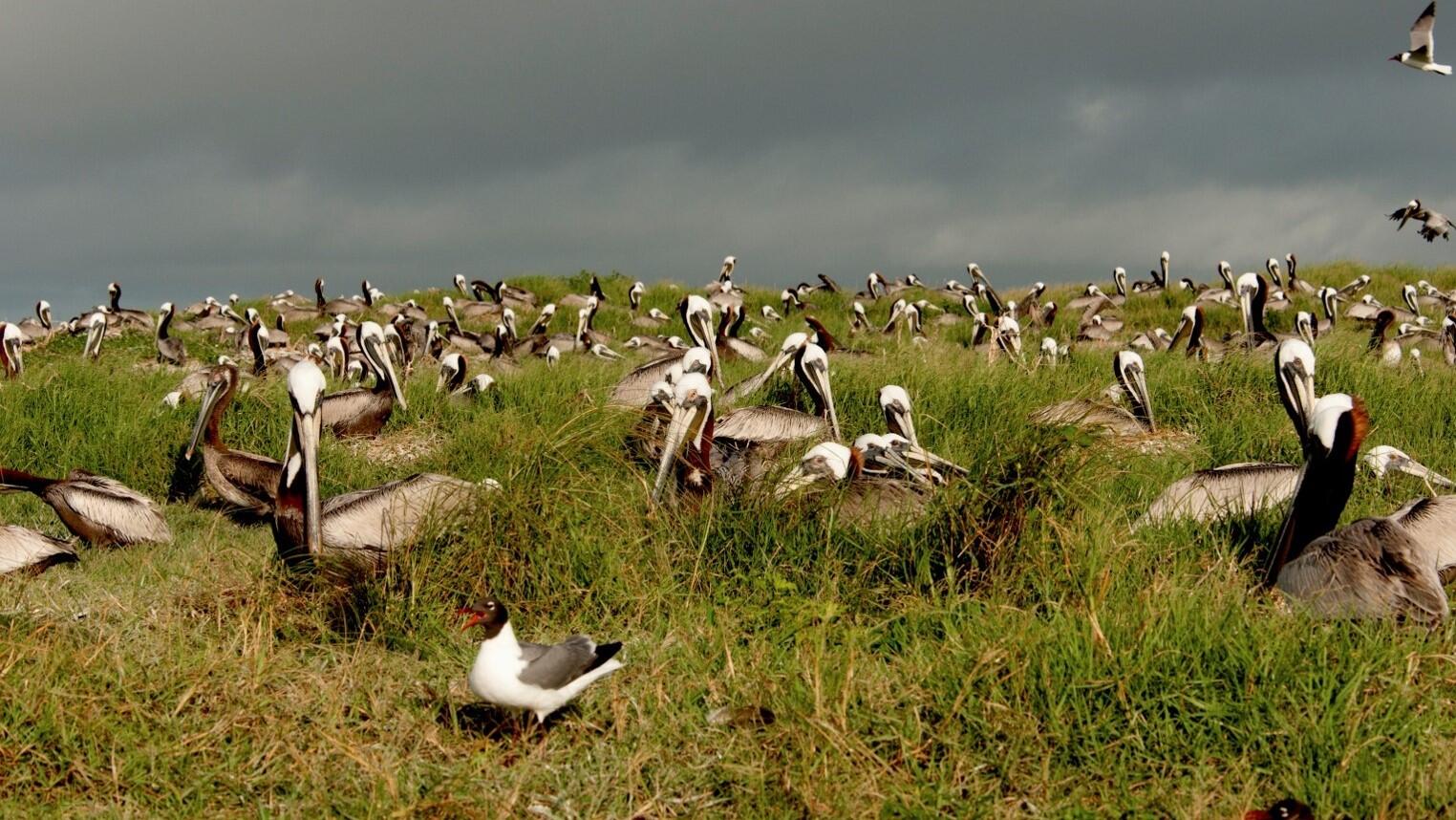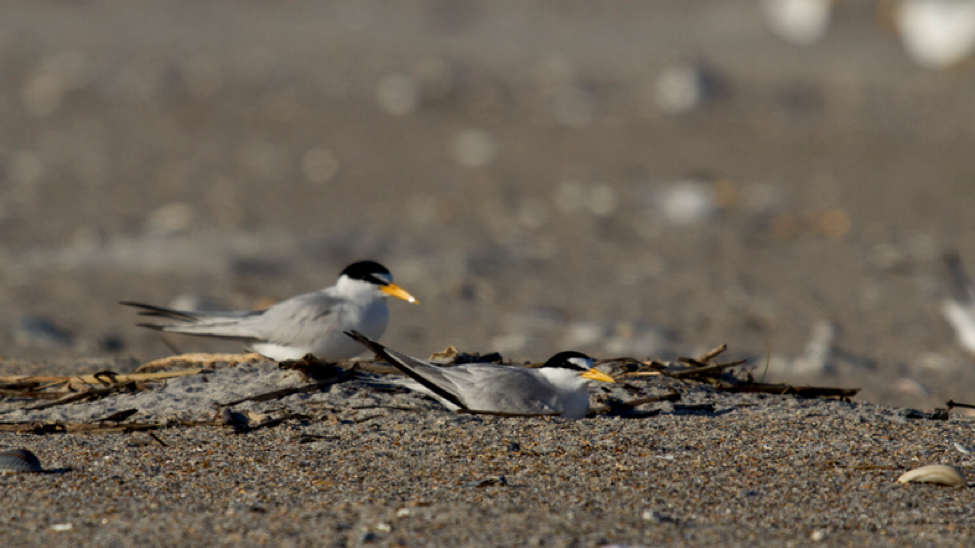
DURHAM — Audubon biologists, volunteers, and Beach Bird Stewards are back in full force this spring, posting signs and roping off bird nesting sanctuaries across the North Carolina coast just in time for the flocks of humans reemerging from their homes and heading to the beach. And now, thanks to a new study, we know just how important this kind of active management and stewardship is for bird nesting success.
Published in the journal Conservation Biology, the study examined the success of coastal bird colonies and found that sites that receive some kind of management—from stewardship programs, like the Bird Stewards at Wrightsville Beach, to the sites that are posted, roped off, and patrolled by Audubon biologists—had much healthier bird populations than nesting sites with no management.
Earlier this spring, biologists and dozens of volunteers posted over 600 signs at nesting sanctuaries from Pamlico Sound to the Cape Fear River. All told, these sanctuaries managed by Audubon are home to about 40 percent of North Carolina’s coastal nesting waterbirds.
At Wrightsville Beach, Bird Stewards help Audubon biologists by educating beachgoers about the birds and the importance of keeping a safe distance from their nesting sites. The program was put on pause last year because of the pandemic, but Bird Stewards will be back this summer.
“Having our volunteers and Bird Stewards back in action is a huge gift to the Audubon team and to our coastal nesting birds,” said Lindsay Addison, Coastal Biologist at Audubon North Carolina. “Species like Least Terns and Black Skimmers raise their young right on the sand. These birds can coexist alongside humans, as long as you give them plenty of space and respect roped off nesting areas.”
"How do you know if you’ve scared a nesting shorebird, seabird, or an entire flock?” Addison says. “If they fly away, calling loudly at you as if to scare you off. Some birds even poop on intruders they view as a threat. This isn’t good for anyone, and when parent birds are disturbed off the nest, even for just a few minutes, it can be fatal for their eggs and babies.”
If you’re on Wrightsville Beach, look for a beach bird steward (you’ll know them by their blue t-shirts), say hello! They are happy to share information and show you how to observe from a safe distance.
Read on a for a full update on nesting birds at this stage of spring.
Cape Fear River
Thousands of White Ibis are already building nests on Battery Island. Audubon biologists and volunteers spent an entire day earlier this month posting signs at the island, which is off limits to visitors.
The island is visible from the Southport waterfront. From that vantage point, you can see the gawky white wading birds flying back and forth from their nest trees. Battery Island regularly hosts the largest colony of nesting wading birds in the state, and it looks on track to do the same this year.
The big news this spring is that Brown Pelicans are nesting on Battery Island for the first time.
While it is a natural island, Battery Island was bolstered many years ago by deposits of dredged sand, which helped create upland habitat that includes a small forest of red cedar, yaupon holly, and other trees and shrubs. In turn, these trees provide nesting habitat for birds.
Wrightsville Beach
The sanctuary at the south end of Wrightsville Beach is roped off, thanks to our Beach Bird Stewards. Black Skimmers have arrived and will begin nesting soon. This was their largest colony in the state last year.
Lea-Hutaff Island
As you may have heard, the big news this year is that Hutaff Island has been conserved in perpetuity. The conservation partnership protecting the land doesn’t change anything on the ground. In fact, that’s the point. It will ensure that the island continues to sustain large, healthy flocks of Least Terns, Black Skimmers, Wilson’s Plovers, and many other birds, under the watchful eye of Audubon biologists.
It’s always a big task posting over 300 signs to protect the most sensitive nesting habitat, but biologists and volunteers were able to complete the work last month, and just in time. Biologists found the first Least Tern nests on April 16.
Large numbers of Least Terns are on track to nest on the island again this year. In each of the past two years, the island has hosted North Carolina’s largest colony of Least Terns, numbering more than a thousand pairs.

Pamlico Sound
Brown Pelicans and Great Egrets have already laid clutches of eggs at a large colony on Beacon Island, located in Pamlico Sound. Audubon biologists traveled by boat to this remote island earlier in April to post signs so visitors know it’s off-limits.
While many of the bird-nesting islands have eroded away in recent years as hurricanes have slammed into the Outer Banks, one island made a comeback. Shell Castle Island, located in Ocracoke Inlet, is made mostly of oyster shells and actually grew in height since last year, as more shells have naturally been deposited on the island.
The added height has created great nesting habitat for birds. On a recent visit, Audubon staff saw two pairs of American Oystercatchers and are hopeful the birds will be able to nest on the island this year.



